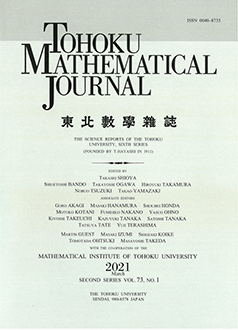Abstract
We investigate minimal extension sheaves on arbitrary (possibly non-rational) fans as an approach toward a combinatorial "virtual'' intersection cohomology. These are flabby sheaves of graded modules over a sheaf of polynomial rings, satisfying three relatively simple axioms that characterize the equivariant intersection cohomology sheaves on toric varieties. As in "classical'' intersection cohomology, minimal extension sheaves are models for the pure objects of a "perverse category"; a Decomposition Theorem holds. The analysis of the step from equivariant to non-equivariant intersection cohomology of toric varieties leads us to investigate "quasi-convex" fans (generalizing fans with convex or "co-convex" support), where our approach yields a meaningful virtual intersection cohomology. We characterize such fans by a topological condition and prove a version of Stanley's "Local-Global" formula relating the global intersection Poincaré polynomial to local data. Virtual intersection cohomology of quasi-convex fans is shown to satisfy Poincaré duality. To describe the local data in terms of the global data for lower-dimensional complete polytopal fans as in the rational case, one needs a "Hard Lefschetz" type result. It requires a vanishing condition that is valid for rational cones, but has not yet been proven in the general case.
Citation
Gottfried Barthel. Jean-Paul Brasselet. Karl-Heinz Fieseler. Ludger Kaup. "Combinatorial intersection cohomology for fans." Tohoku Math. J. (2) 54 (1) 1 - 41, 2002. https://doi.org/10.2748/tmj/1113247177
Information





